Chapter 21: Overview of the Immune System
1/82
There's no tags or description
Looks like no tags are added yet.
Name | Mastery | Learn | Test | Matching | Spaced |
|---|
No study sessions yet.
83 Terms
Innate immunity
The first line of defense against pathogens, including surface barriers and internal defenses.
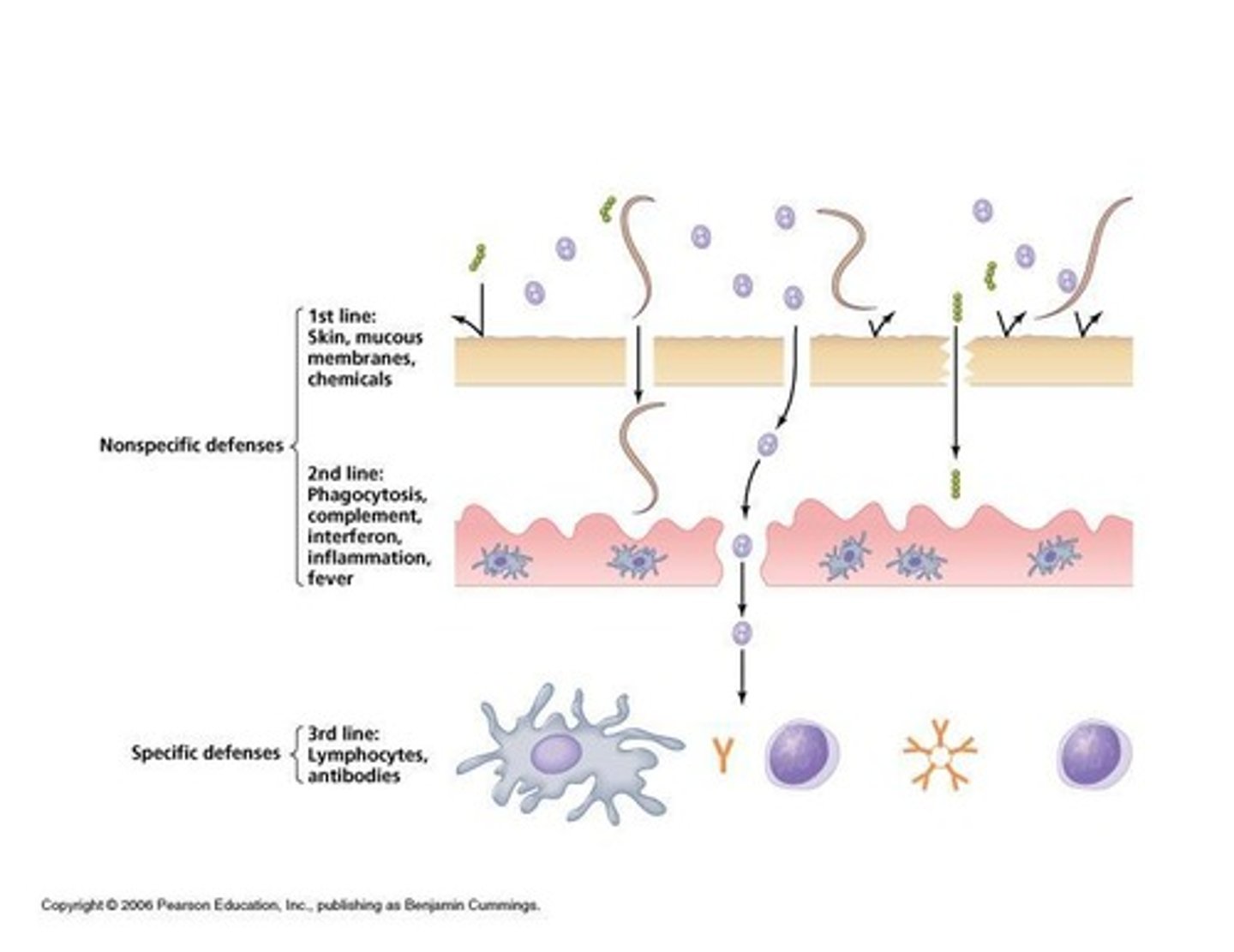
Adaptive immunity
The immune response that develops after birth and acts specifically against certain agents.
Surface barriers
Physical protective barriers, including skin and mucous membranes, that prevent pathogens from entering the body.
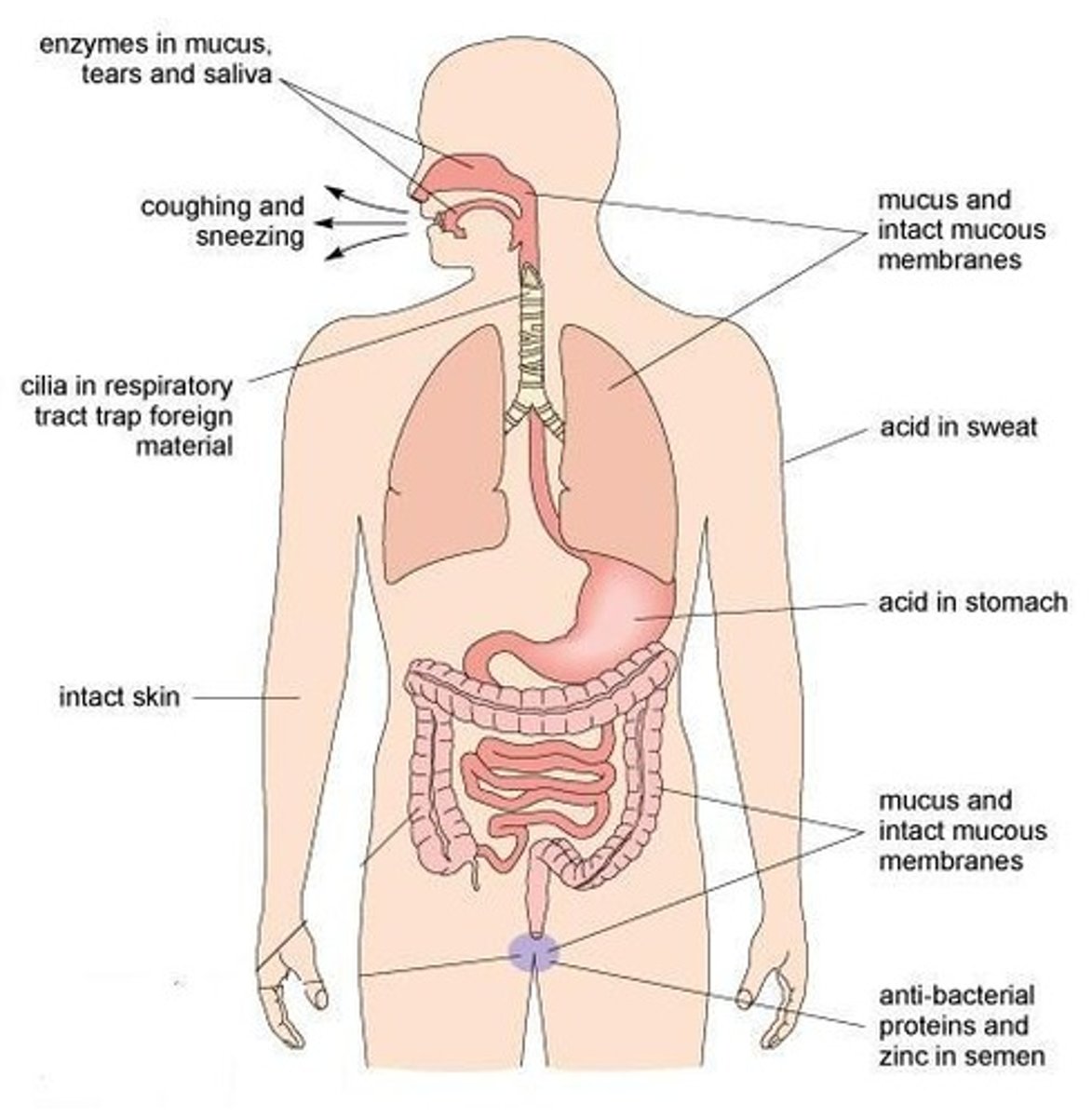
Internal defenses
Nonspecific immune responses that act when pathogens penetrate surface barriers, including phagocytes and natural killer cells.
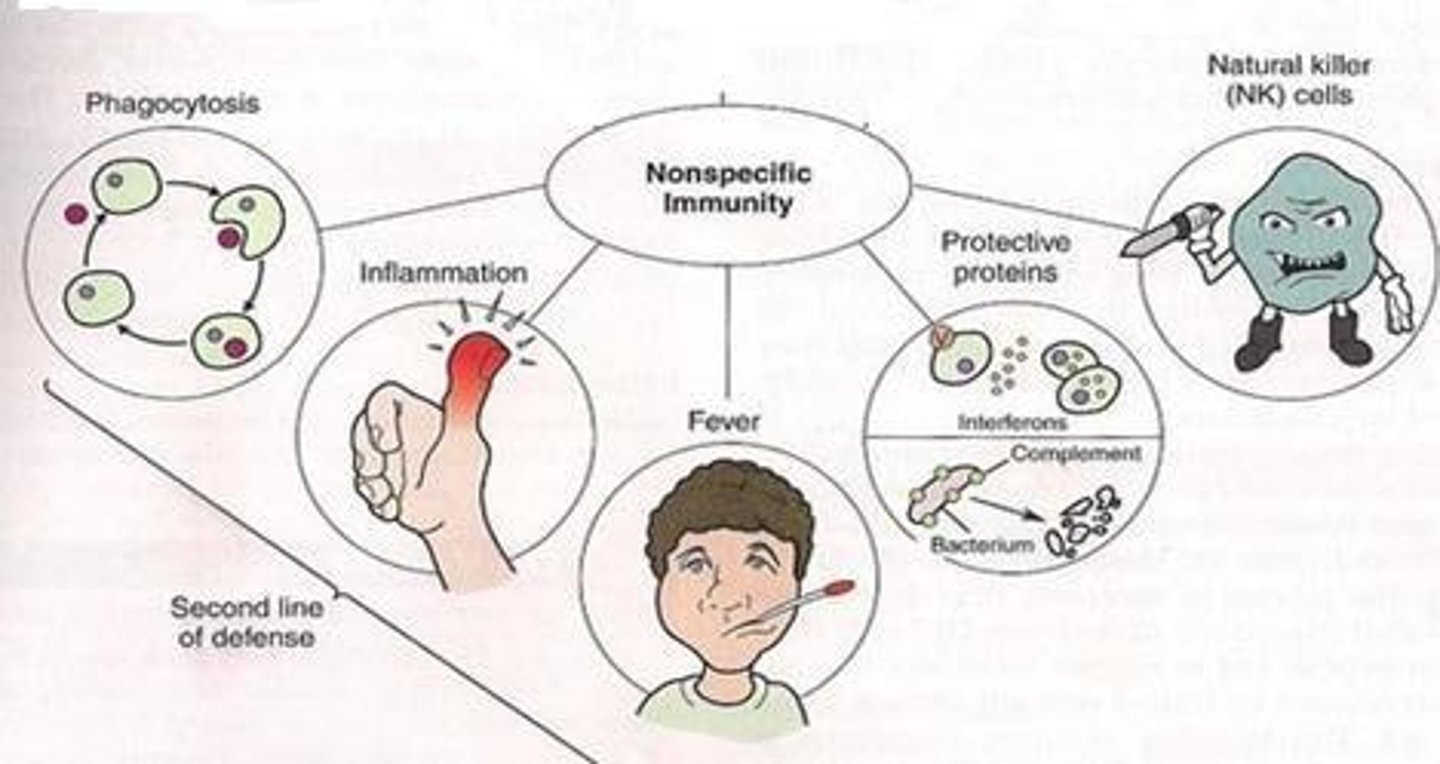
Humoral immunity
The aspect of adaptive immunity that involves B lymphocytes and the production of antibodies.
Cellular immunity
The aspect of adaptive immunity that involves T lymphocytes and the direct attack on infected cells.
Phagocytes
Cells that engulf and digest pathogens as part of the internal defenses.
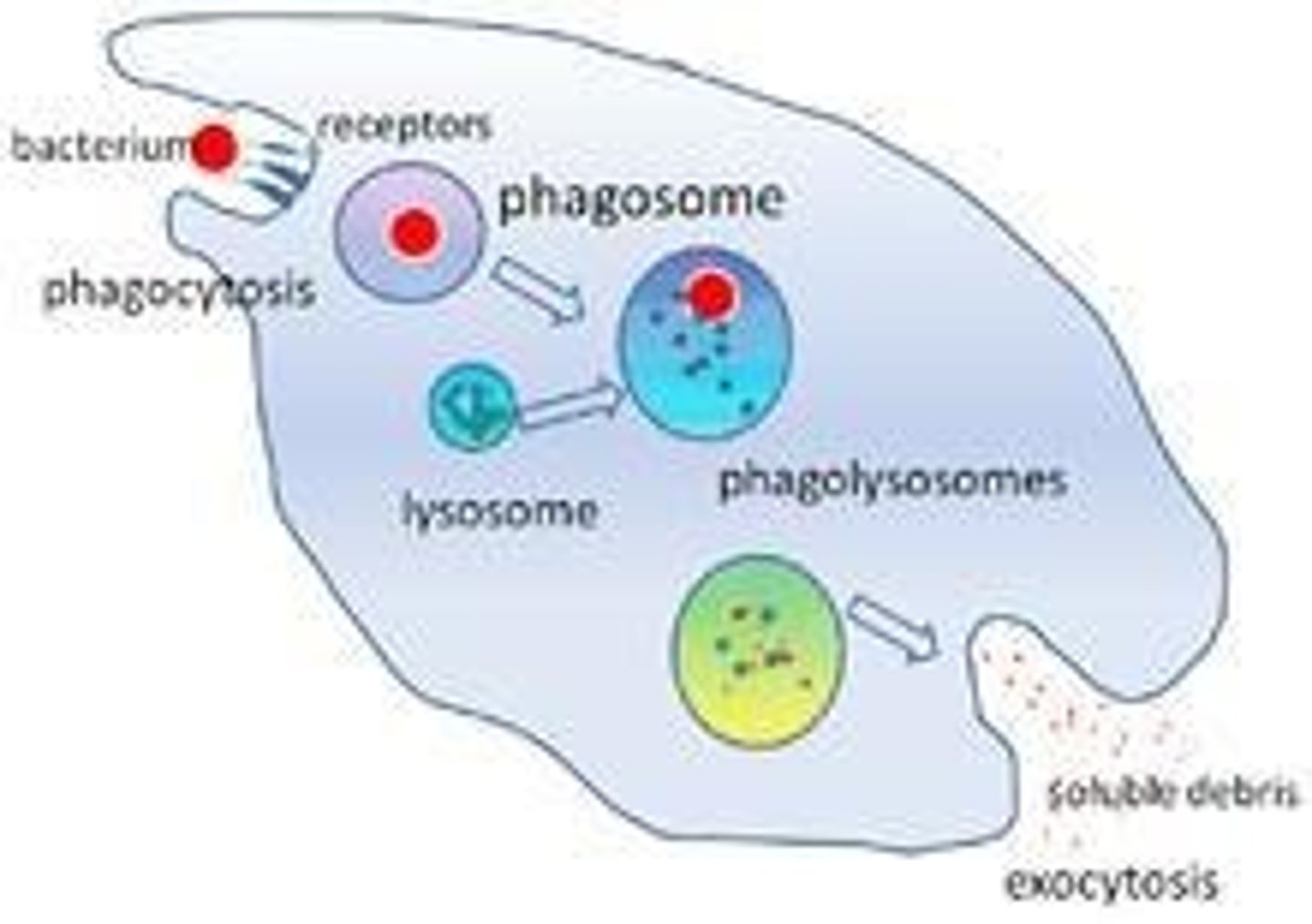
Natural killer cells
A type of lymphocyte that can destroy infected or cancerous cells as part of the internal defenses.
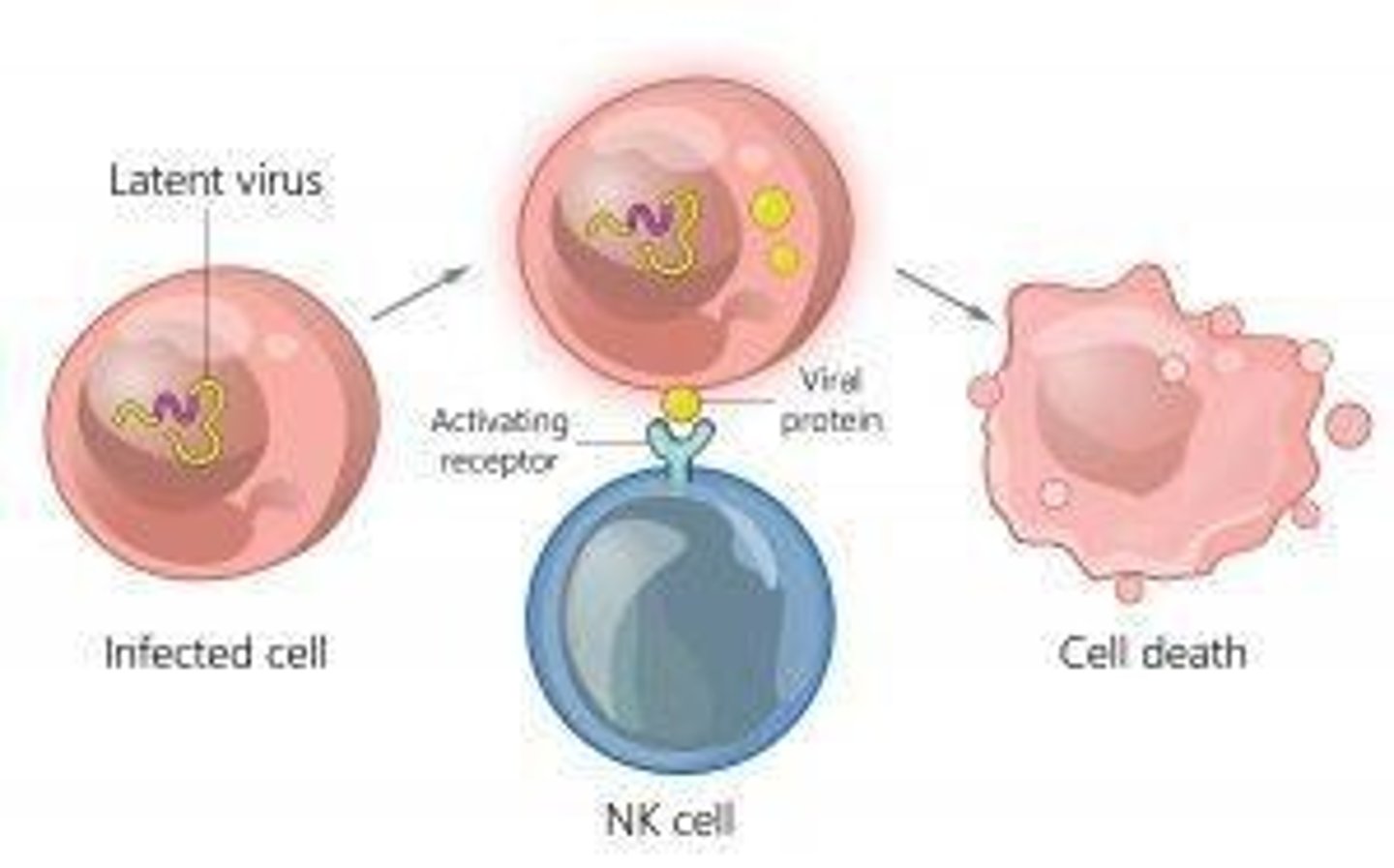
Inflammation
A vascular and cellular response to injury or infection that helps to contain and eliminate pathogens.
Interferons
Proteins produced by cells in response to viral infections that help to inhibit viral replication.
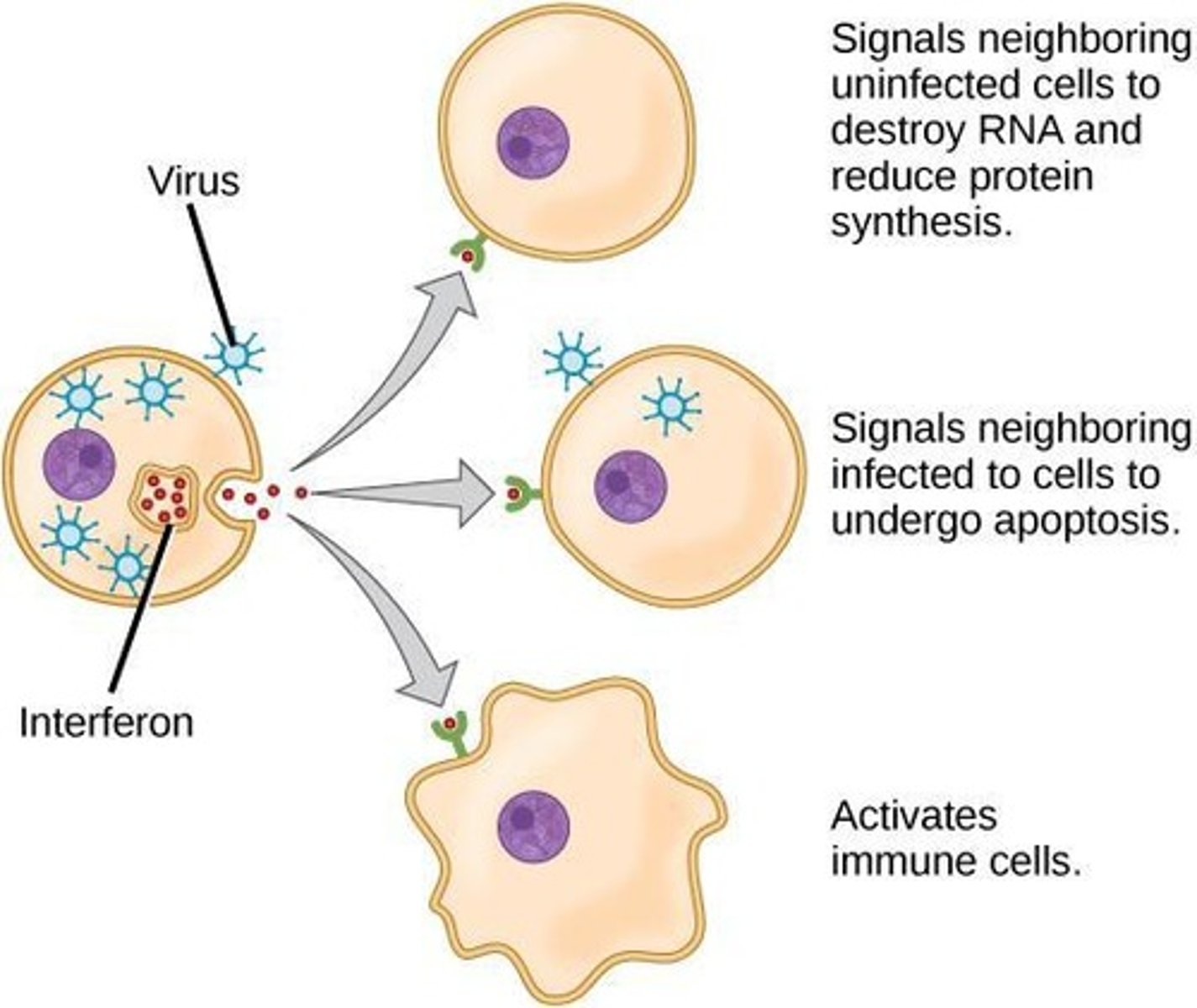
Complement
A group of proteins that enhance the immune response by marking pathogens for destruction.
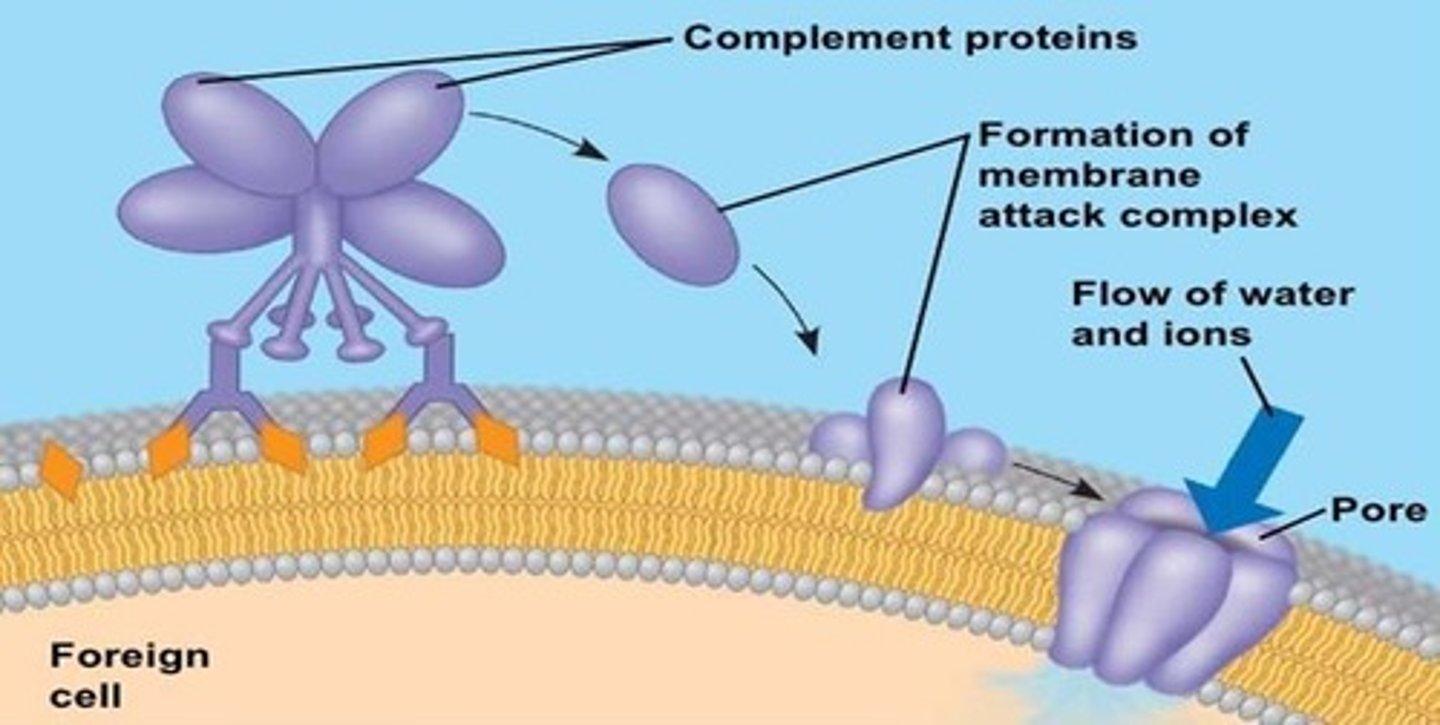
Fever
An increase in body temperature that is part of the immune response to help fight infections.
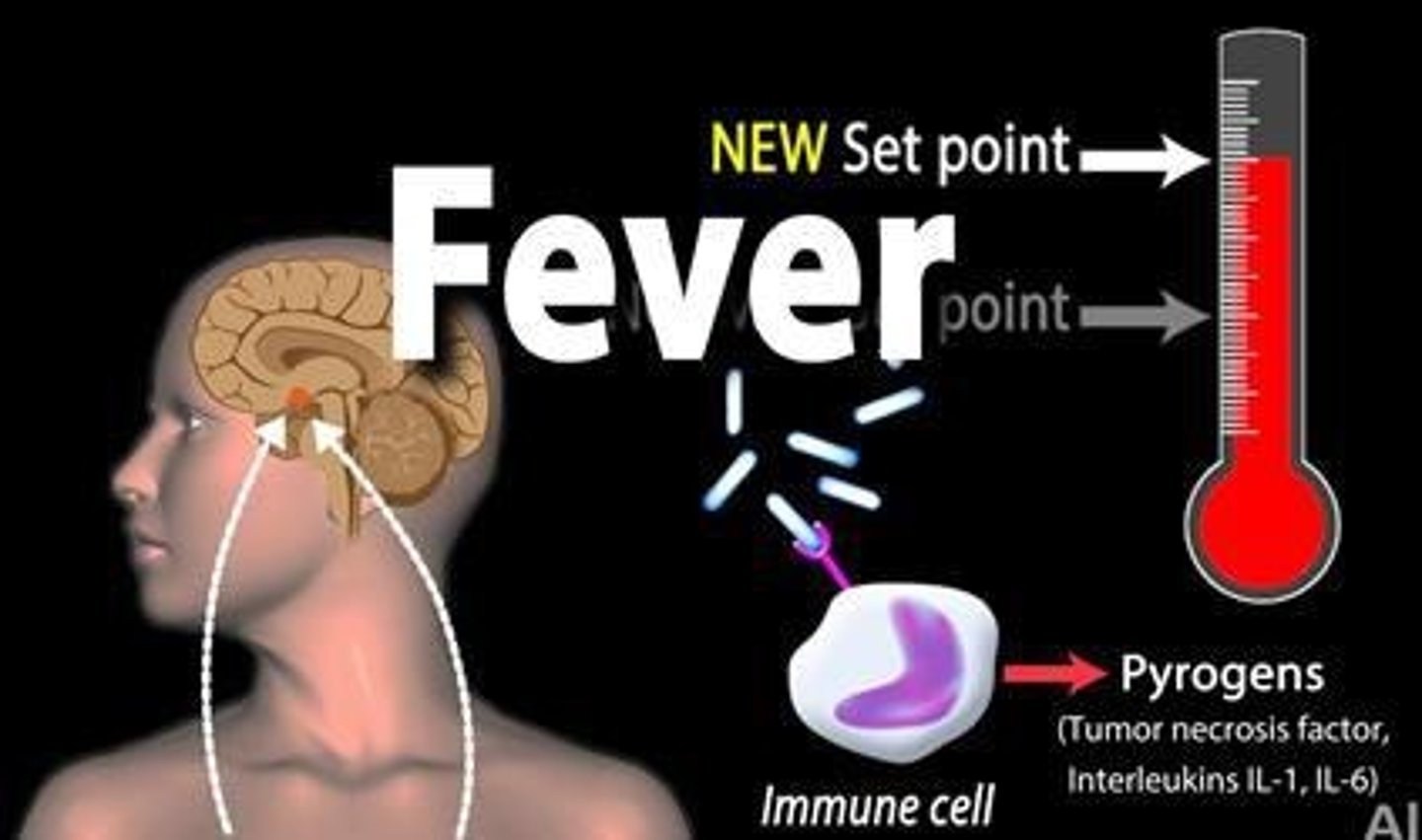
Active humoral immunity
Immunity that develops after exposure to an antigen, leading to the production of antibodies.
Passive humoral immunity
Immunity acquired through the transfer of antibodies from another source, such as maternal antibodies.
Vaccination
The process of inducing immunity by exposing the immune system to a harmless form of an antigen.
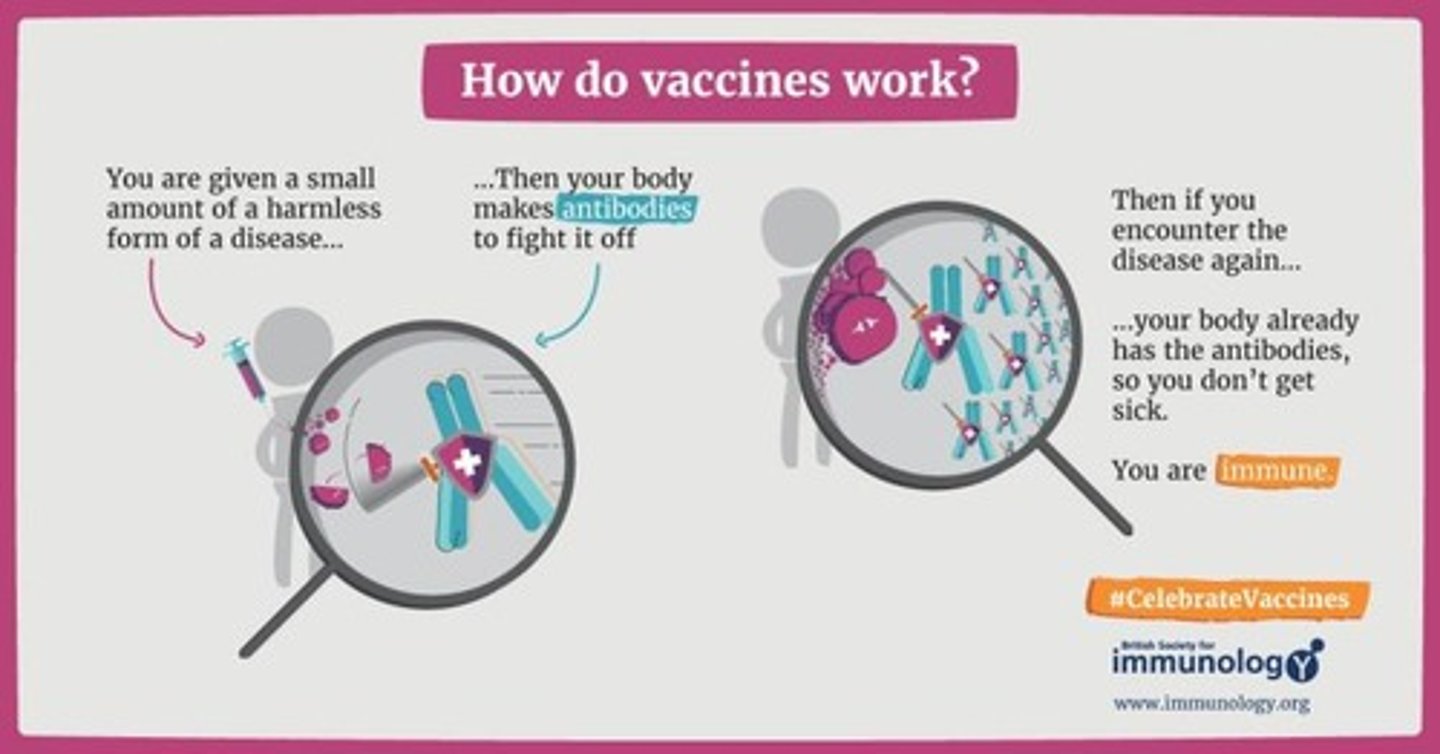
Antigen presenting cells
Cells that display antigens on their surface to T lymphocytes, initiating the cellular immune response.
T lymphocytes
A type of white blood cell that plays a central role in cellular immunity.
B lymphocytes
A type of white blood cell that is responsible for humoral immunity and antibody production.
Skin
The largest physical barrier of the body, formed by thick stratified squamous epithelium.
Mucous membranes
Membranes lining various tracts in the body that secrete mucus to trap pathogens and debris.
Cilia
Hair-like structures that help move mucus and trapped pathogens out of the respiratory system.
Mucus
A viscous secretion expelled by coughing or sneezing, or swallowed, ending up in the stomach.
Innate Defenses - Surface Barriers
The body's first line of defense against infection, including secretions that act as chemical barriers.
Acidic Secretions
Secretions that create a hostile environment for pathogens; examples include sweat, urine, vaginal secretions, and HCl in the stomach.
Antimicrobial Secretions
Substances that inhibit or destroy pathogens; examples include lipids in sebum, lysozymes in tears and saliva, and proteins and zinc in semen.
Innate Defenses - Internal Defenses
The second line of defense that includes cells and chemical substances that attack microbes invading deeper tissues.
Macrophages
Phagocytic cells that develop from monocytes and are known by different names in various tissues, such as Kupffer cells in the liver.
Neutrophils
Phagocytic cells that become active upon encountering infectious material in tissues.
Natural Killer (NK) Cells
Large cells that induce apoptosis in cancer and virus-infected cells by secreting chemicals that break down cell membranes.
Apoptosis
Programmed cell death induced by NK cells to prevent the release of infectious viruses.
Inflammatory Mediators
Chemicals released from injured cells that promote inflammation by stimulating blood vessels and attracting cells to the injury site.
Vasodilation
The widening of blood vessels to increase blood flow to an injury site, resulting in redness and heat.
Signs of Inflammation
Four indicators of inflammation: redness, heat, swelling, and pain.
Capillary Permeability
The ability of capillaries to allow substances to pass through, increased during inflammation to facilitate immune response.
Inflammatory Exudate
Fluid that leaks out of blood vessels during inflammation, containing immune cells and proteins.
Bradykinin
An inflammatory chemical that stimulates nerve endings, contributing to pain.
Prostaglandins
Inflammatory chemicals that stimulate nerve endings, contributing to pain.
Margination
The displacement of white blood cells (WBCs) to the periphery of blood vessels due to increased blood vessel permeability.
Pavementing
The adhesion and lining up of WBCs to the wall of blood vessels.
Diapedesis
The squeezing of WBCs through gaps between retracted endothelial cells.
Emigration
The process by which WBCs leave the blood and enter the interstitial space.
Chemotaxis
The attraction of WBCs to the site of injury by inflammatory mediators.
Antimicrobial proteins
Proteins that attack microorganisms directly to hinder their ability to reproduce.
Opsonization
The process by which a pathogen is bound and coated by complement proteins, tagging it for phagocytosis.
Membrane attack complex (MAC)
A complex of reactions that activates complement proteins on the surface of a pathogen's cell membrane, forming pores that lead to cell death.
Pyrogens
Substances secreted by immune system cells that raise the body's thermostat in the hypothalamus.
Cellular metabolic rate
The rate at which cells carry out metabolic processes, which increases during fever to help fight infections.
Pathogen
Any substance that can cause disease, recognized by the immune system as non-self.
Antigen
Any substance such as a molecular structure present on the outside of a pathogen that the immune system identifies as a foreign non-self substance.
Immunocompetent
The ability of mature lymphocytes to recognize a specific foreign antigen and attack it.
Self-tolerance
The unresponsiveness of immune cells to self antigens, preventing them from attacking body tissues.
Autoimmune diseases
Conditions where the immune system loses the ability to distinguish self from foreign, leading to the destruction of body tissues.
Rheumatoid arthritis
An autoimmune disease that attacks the joints.
Type I diabetes mellitus
An autoimmune disease that attacks the Beta cells of the pancreas producing insulin.
Multiple sclerosis
An autoimmune disease that attacks the myelin sheath around nerves.
Myasthenia gravis
An autoimmune disease that attacks the neuromuscular junction.
Graves' disease
An autoimmune disease that attacks the thyroid gland.
Systemic lupus erythematosus
An autoimmune disease that attacks connective tissues and affects many organs, including joints, kidneys, brain, and heart.
Plasma cells
Activated B lymphocytes that produce specific antibodies.
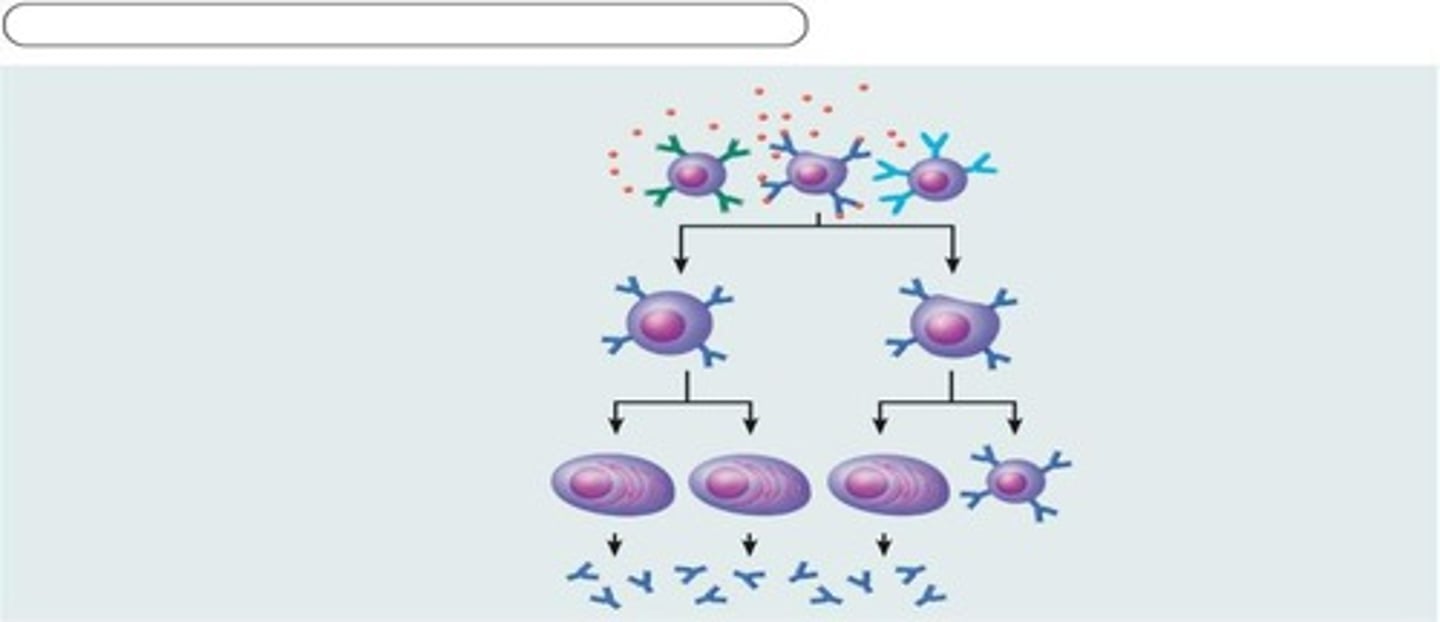
Memory cells
B cells that provide immunological memory and mount an immediate response to future exposures to the same antigen.
Immunoglobulins
Proteins secreted by plasma cells that bind specifically with antigens.
IgG, IgA, IgM, IgD, IgE
The five principal classes of antibodies, each with specific biological roles.
Mechanisms of action of antibodies
Methods by which antibodies destroy antigens, including immobilization, agglutination, neutralization, and stimulation of inflammation.

Agglutination
The clumping of antigens together to form clusters that enhance phagocytosis.
Neutralization
The process of masking antigens and toxins by binding to them, preventing their attachment to body cells.
Stimulation of inflammation
The triggering of histamine release by antibodies.
Naturally acquired active immunity
Response to a bacterial or viral infection.
Artificially acquired active immunity
Response to a vaccine of dead or attenuated pathogens.
Naturally acquired passive immunity
Antibodies delivered from the mother to a fetus via the placenta or to an infant through her breast milk.
Artificially acquired passive immunity
Injection of serum containing antibodies.
Booster
Repeated injections of vaccines administered at intervals to maintain high levels of antibodies in the blood.
Antigen presenting cells (APCs)
Cells that detect, engulf, and present antigens to T lymphocytes.
Helper T cells
Stimulate the activation and production of more killer T cells and the activation of B lymphocytes.
Cytotoxic (Killer) T cells
Secrete chemicals to attack virus-infected cells, cancer cells, and damaged cells.
Memory T cells
Formed from some T lymphocytes to provide a rapid response to future exposures to infections.
Regulatory (Suppressor) T cells
Inhibit further activation of T cells after the antigen has been suppressed.
Major types of APCs
Include macrophages and dendritic cells.
HIV
Human immunodeficiency virus that attacks helper T cells, severely damaging the immune system.
Acquired immunodeficiency syndrome (AIDS)
A condition caused by HIV that severely impairs the immune system.
Immediate protection
Protection provided by passive humoral immunity through direct introduction of antibodies.
Specific scheduled vaccinations
Vaccinations recommended for children, often completed by age two.
Influenza vaccine
Recommended during flu season for individuals of various ages.
Pneumonia vaccine
Recommended for elderly individuals.